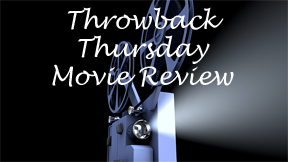“The Matrix” was a cultural phenomenon when it was released on March 31, 1999. It elevated Keanu Reeves from movie star to superstar and introduced the world to “bullet time” (the slow-motion portion of an action scene). It was a critical and commercial success, spawning two sequels and a series of animated shorts. Does it hold up 20 years later? Let’s take a look:
IDEAS AND CONCEPTS
- The idea that the world as we know it could simply be a dream, or a complicated program, was mind-blowing to me. The details throughout the film, like the idea that déjà vu is a glitch in the Matrix, are what convince us this could actually be possible. In fact, there have been numerous real-world studies done trying to prove this one way or another since the film’s release.
- As the saying goes, “ignorance is bliss,” and the first film focuses on this idea when we find out crew member Cypher (Joe Pantoliano) has betrayed the humans and is working with the machines in exchange for a comfortable life in the Matrix with no memory of the real world. This concept is relatable in our lives today: Is it worth knowing the whole truth or would it be better to not know and go on living a normal life, none the wiser to the horrors of what’s really happening?

“The Matrix” (1999)
Directors: Lana Wachowski, Lilly Wachowski
Writers: Lilly Wachowski, Lana Wachowski
Stars: Keanu Reeves, Laurence Fishburne, Carrie-Anne Moss
- The idea of Neo (Reeves) being The One is clearly a reference to faith. Morpheus (Laurence Fishburne) is unquestionably faithful to the idea of Neo being The One who will end the war and save the world. Some crew members are not believers, but they follow Morpheus anyway with the hopes that he could be right and the human race could be saved from the machines. As things fall into place, we see more and more faith from the other crew members. In the later films, as the real-world situation becomes dire, we also see more people lean on faith in Neo rather than accepting the reality they are in.
BEST ACTION SCENE
Although the Morpheus rescue is the biggest action scene, the final showdown between Neo and Agent Smith (Hugo Weaving) is the climactic moment, and it doesn’t disappoint. It’s fun to watch Neo dodge a barrage of bullets and then beat up on Agent Smith. Bringing together the bullet-time effects, kung fu, wire stunts and some great fight choreography, we see Neo accept his evolution, allowing him to seemingly beat Agent Smith.
BIGGEST ‘WOW’ MOMENT
Upon first viewing, the movie is filled with “wow” moments as the CGI and effects were cutting-edge. Even upon a rewatch, the first time we see Neo dodge a bullet is pretty epic.
BIGGEST SURPRISE
It may seem silly to use the main plot point here, but when Neo takes the red pill and wakes up in a cocoon in the middle of a field of unconscious humans in the machine world, it’s pretty shocking.
BEST VILLAIN
In the first film, the best villain is obviously Agent Smith, as he is the main foe. A computer program created to keep the Matrix stable, he basically has superpowers inside the Matrix. He is also able to take over the body of any person he chooses, making him not only unbeatable, but nearly impossible to escape. Plus, Weaving’s creepy voice adds to the effect.
DOES IT HOLD UP?
Yes. The 4K UHD release of “The Matrix” is outstanding. From the opening sequence, it is apparent this upgrade was done right. “The Matrix” has never looked or sounded better at home. The CGI and the movie itself also hold up extremely well. Although technology has changed (computer monitors are thinner, cellphones look different, etc.), it is not a stretch to believe these survivors in the post-apocalyptic world have cobbled together older tech to fit their needs. The cyberpunk feel is timeless.
FINAL THOUGHTS
Although not as revolutionary by today’s CGI standards, “The Matrix” is a sci-fi action flick that holds up 20 years later. The story is intriguing and the action scenes are outstanding. What makes it so exciting is the idea of the Matrix itself, in which the laws of nature and reality can be bent or broken. From a writing and directing standpoint, this opens the doors to a ton of fun possibilities and action sequences, which we see both in the original film and the first sequel, “The Matrix Reloaded.”
Sure, there are a few slow parts and a few things we’ve seen before, but as the credits rolled and Rage Against the Machine’s appropriately titled “Wake Up” blasted, I could not wait to start “Reloaded.” Do yourself a favor and revisit “The Matrix.”



I just watched “The Matrix” for the first time since 1999 and enjoyed it a lot more this time. I guess I wasn’t ready for it in the summer of “The Phantom Menace” (my No. 1 movie of 1999 🙁 ).
IDEAS AND CONCEPTS: I agree, the world-building is excellent. Early on, I was worried I’d get too confused and the film would leave me in the dust, but ultimately the Wachowskis do a nice job of peppering the information in with the forward movement of the plot and I grasped it by the end. There’s 1) the real world, where Morpheus and his crew fly around in a ship staying one step ahead of the jellyfish-looking sentinels; 2) The virtual reality programs where Neo can try out the kung-fu that will serve him well in the Matrix, and also stock up on guns that work in the Matrix; and 3) The Matrix itself, which looks like 1999 Earth but is actually a simulation. I agree, the déjà vu is a nice touch – something that forces us to ask “Are we possibly plugged into the Matrix ourselves?”
BEST ACTION SCENE: The Neo-versus-Smith finale really showcases the kung-fu Neo uploaded/learned, while also showcasing the slo-mo special effects that influenced (probably for the worse) so many movies in the following years, including “Scary Movie” (2000) 🙂 . So I can’t argue with your selection. But I found it pretty epic when Neo shoots up the room where Morpheus is being held, rescues him by jumping out of the helicopter and catching him, and then later also rescues Trinity by holding on to the rope and trusting she’ll have the other end when she jumps out of the chopper. That’s a bit more “traditional” of an action sequence, but well done.
BIGGEST ‘WOW’ MOMENT: I’d almost argue for Trinity defying gravity and kicking ass (“Your men are already dead”) at the very start of the film, because this is the first instance where we know we’re in a WTF world where the usual rules don’t apply. That’s followed by a whole sequence where Trinity and Smith defy more rules, such as leaping from one building to the next, separated by the width of a street.
BIGGEST SURPRISE: “Surprise” or not, it’s visually stunning when Neo wakes up in his artificial womb and we see the rows upon rows of containers. Vats of slumbering humans is kind of a sci-fi trope – “The X-Files” comes to mind – but there’s something effectively sinister about how it’s portrayed in “The Matrix,” with the red and black color palette. And I like how the subsequent “birth” sequence illustrates that Neo is moving from the safety of the womb into the scary real world.
BEST VILLAIN: Smith is a formidable villain because he can jump into any available body, but what I really enjoy is Weaving’s performance. It’s an old-school, scenery-chewing turn that’s kind of funny but appropriate for this story. Smith is programmed to be menacing toward our heroes. And Weaving also nicely portrays the arrogance that comes from the computer believing that it is superior to humans. Smith’s lecture to Morpheus, when he compares humans to a virus (backing it up with scientific observations, as a computer mind would do), is particularly good.
Cypher also deserves a nod as a strong villain, because – as you say – he forces us to examine what we would do in that situation; he makes a case for the appeal of the blue pill (staying in the Matrix and being oblivious). In the real world, we reflexively hate the “blue pill” types, but when watching “The Matrix” and seeing how bleak the real future is, the choice isn’t so easy.
DOES IT HOLD UP?: I saw it on DVD on a relatively small screen with a home-theater-in-a-box setup, and it held my attention. It’s a bit slow at times, but that’s the right choice because this a dense world; we need time to soak it up. There’s nothing in “The Matrix” that we haven’t seen since, because it’s been copied so much. And the production design is actually reminiscent of a movie from one year before, “Dark City.” The explanation that the Matrix is based on 1999 Earth (the peak of human civilization) is a nice touch, as it allows the film to stay futuristic even as real-world tech changes. All told, it holds up both for its historical importance and as a good story.
FINAL THOUGHTS: Great world-building, top-shelf action. The ideas arguably aren’t as groundbreaking as they’re given credit for. About mid-film, I got a serious “Terminator” vibe, and even “The Terminator” was not the first story to imagine that artificial intelligence surpasses and enslaves humans. But, of course, the way in which the Matrix uses humans – literally for batteries – is different from “The Terminator” while also serving as a commentary on how humans in the real 1999 (and of course 2019) keep the machine humming along. The “machine” to me, and probably many viewers, is the status quo of big government, big war, big taxes (Morpheus mentions “paying your taxes” as something that happens in the Matrix), and I think that’s what the Wachowskis are going for, but the concept is flexible. It’s clear by film’s end, when Neo says “this is the beginning” and starts to demonstrate his skills as a superhero (as he would appear to those plugged into the Matrix) that this is the start of his journey. I’m looking forward to seeing what happens in “Reloaded.”
Rating: 4.5 stars
John